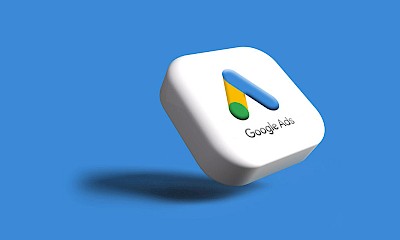The cost per thousand - or CPM for short - is a key figure in marketing when it comes to planning and evaluating advertising measures. It describes the price that a company has to pay to reach 1,000 people with an advert or spot.
The key figure is also known internationally as cost-per-mille (CPM). "Mille" is the Latin word for "thousand". Especially in the digital environment, the term CPM is often used instead of CPM.
The CPM is a neutral and comparable figure that makes no statement about how the advertising works, but only describes the costs per contact.
The most important facts about the thousand contact price in brief:
Key figure for evaluating the costs for 1,000 advertising contacts
Internationally also known as cost-per-mille (CPM)
Formula: Advertising costs ÷ reach × 1,000
Makes it easier to compare different advertising media
Statement only about quantity, not about quality of contacts
How is the contact price per thousand calculated?
The calculation follows a simple basic formula:
CPM = (total cost of advertising ÷ contacts reached) × 1,000
Example: If a campaign costs 5,000 euros and reaches 200,000 contacts, the CPM is 25 euros. This means that 25 euros were spent for every 1,000 visual contacts.
What influences are there on the contact price per thousand?
The thousand contact price can be influenced by various factors:
Media channel: Print adverts in a trade magazine often have higher CPMs than online banners as the target audience is more specific.
Placement & format: A front page in a newspaper or a video ad in front of a popular YouTube video is charged more than smaller placements.
Time & environment: Seasonal peaks (e.g. Christmas) or particularly popular advertising environments (e.g. sporting events) increase the CPM.
Exclusivity: Premium environments with a high level of attention or guaranteed visibility (e.g. 100 % share of voice on a website) are reflected in the price.
In practice, a distinction is also made between the theoretical CPM (based on the provider's media data) and the effective CPM. Discounts, package prices or better target group addressing can result in the actual CPM deviating from the official figures.
Where is the CPM used?
The CPM is a fixed parameter in both traditional marketing and the digital environment:
Print media: Newspapers, magazines or trade journals
Radio & TV: spots on radio or television
Outdoor advertising: billboards, city light posters or digital screens
Online marketing: banner advertising, video ads, social media ads or programmatic advertising
Thanks to its universal application, it can help to make campaigns comparable across different media. An advertiser can therefore calculate whether an advert in a trade magazine or a social media post is cheaper per 1,000 contacts.
What advantages does the TKP offer?
The CPM creates a standardised basis for comparing different media channels.
Companies can decide more easily how to distribute their advertising money.
Even complex campaigns can be quickly analysed using a simple formula.
The CPM makes it clear what costs are associated with reach.
What are the limits of the CPM?
Despite its usefulness, the CPM also has clear limitations:
Only quantity, no quality: The CPM only takes into account the costs per visual contact. Whether the target group is actually relevant or whether the advert attracts attention is not taken into account.
No measurement of effectiveness: The CPM cannot be used to determine whether an advert leads to clicks, leads or sales.
Scatter loss: A low CPM does not automatically mean that the advert is efficient. If the advert reaches many unsuitable people, the value for the company is low.
What is the difference between gross and net reach?
Gross reach: All visual contacts are counted here - including multiple contacts from the same person. This is the classic basis for the CPM.
Net reach: Each person is only counted once, regardless of how often they come into contact with the advert. Net reach is often used as the basis for the thousand user price (TNP).
How does the CPM differ from other key figures?
In addition to the CPM, there are other models that depict costs in marketing:
CPC (cost-per-click): Billing per actual click
CPL (cost-per-lead): Billing per qualified contact (lead)
CPO (cost-per-order): Billing per order placed
The CPM is therefore more of a reach indicator, while the other key figures are more focussed on success or conversion.
Conclusion: When does the CPM make sense?
The CPM is a proven key figure when it comes to comparing the pure costs of reach. It is particularly practical in media planning, as it shows at a glance how expensive 1,000 contacts in a particular medium are.
However, in order to really be able to judge the quality of a campaign, the CPM should always be considered together with other key figures. This is the only way to determine whether advertising not only reaches many people, but also has an impact.
Sources:
https://de.wikipedia.org/wiki/Tausend-Kontakt-Preis
https://www.onlinemarketing-praxis.de/glossar/tausend-kontakt-preis-tkp
https://onlinemarketing.de/lexikon/definition-tkp







